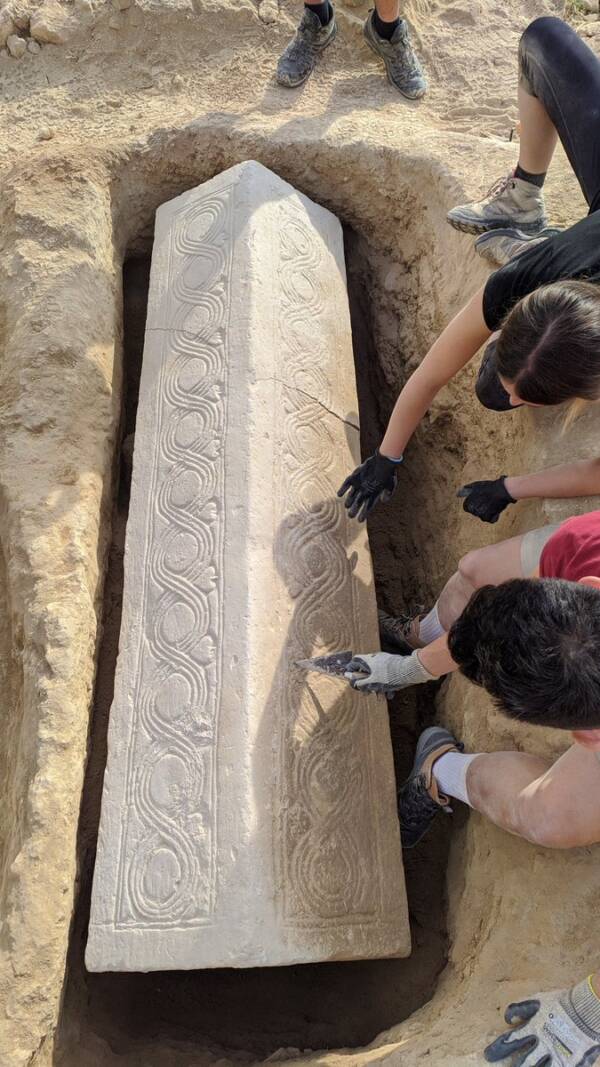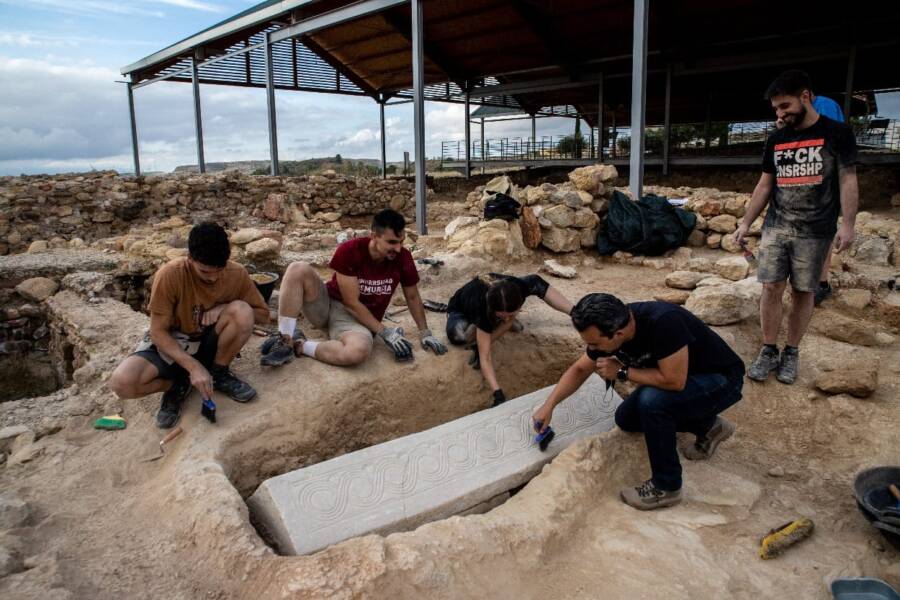Archeologists from the University of Murcia came across the 1,500-year-old Visigoth sarcophagus at the Roman necropolis of Los Villaricos.
University of MurciaThe Visigoth sarcophagus that was unearthed in Mula , Spain .
As they kneel in the detritus and the heat , searching the former Roman settlement of Los Villaricos for history ’s treasures , archeologists come across an incredible uncovering . There , buried in pale yellow poop , they establish a 1,500 - yr - old Visigoth sarcophagus — terminated with human remains .
“ We were n’t ask this salient discovery,”said Professor Rafael González Fernándezof the University of Murcia , who led the excavation .

University of MurciaThe Visigoth sarcophagus that was unearthed in Mula, Spain.
The sarcophagus , about six ft long and in remarkably good status , likely date to the 6th or seventh century A.D. It features elaborate plan across its top , including a coiled geometrical pattern , ivy leaves , and the Chi Rho sign . That signaling appear frequently in Christian nontextual matter tosignify the victory of the Resurrection .
Archeologists come across the sarcophagus during an yearly mining of the former papistic settlement . As González explained :
“ This yr ’s campaign was focused on finish excavating the last three burials of the necropolis and carry on with the excavation piece of work of the complex turn up to the north of the townsfolk , where in the last few year we had documented a new set of kitty . ”

University of MurciaThe sarcophagus is elaborately designed and well-preserved.
But , alternatively , they came across something alone “ unexpected ” — a arresting sarcophagus . The piece was buried by the Visigoths , who replaced the Romans in the region following the fall of the Roman Empire .
University of MurciaThe sarcophagus is in an elaborate way plan and well - preserved .
For hundreds of years , ancient Romans lived and thrived at the closure of Los Villaricos . They enjoyed the bounty of the region , which provided silver for coin , wheat to provender troops , and other material like olive oil , marble , and sandstone .

University of MurciaRuins of the Roman settlement can be seen in the background of the sarcophagus.
Over the year , they rest down elaborate mosaic floor , fabricate thermic bath , and work up an European olive tree closet .
But the peaceable prosperity of Los Villaricos did not last . As the years of the Romans wane , a new scourge express up on the horizon : the Visigoths .
The Visigoths , an early Germanic hoi polloi , sweep south during the 3rd and 5th century A.D. As the Roman Empire collapsed around the same clip , the Visigoths launched invasions into former R.C. territories .
University of MurciaRuins of the papistical settlement can be seen in the background of the sarcophagus .
By the other 6th century , Romans mostly abandon the agricultural Francisco Villa of Los Villaricos . But a few people stayed behind . And as the Visigoths moved in , these former Romanic citizens transmute their biography to match the invader . They built a semi - orbitual construction for spiritual purposes and a burying ground for the utter nearby .
That ’s where the archaeologist from the University of Murcia made their staggering breakthrough . It ’s significant because , according to González , the sarcophagus , “ corroborates former field of study on the chronology of the necropolis . ”
Given that the sarcophagus appears to escort from the sixth or 7th hundred A.D. , it equip in neatly with how archeologist translate the timeline of Los Villaricos — from its flush as a Romanic resolution until the 5th or 6th century , to its intrusion and line of work by Germanic Visigoths .
sure enough , it appears that archeologist have more to discover at the ancient situation . But , for now , its present - day occupant are thrill at the recent discovery .
The mayor of Mula , Juan Jesús Moreno , pledged that the “ commitment of the City Council of Mula and the entire Corporation with the archeologic works is absolute . ” He think that the sarcophagus will “ without a question … lodge in a spectacular piazza in the Museo Ciudad de Mula . ”
And Murcia ’s Director of Heritage , María Dolores Sánchez Alarcón , is likewise tickle pink by the discovery .
“ This is a very important moment for the region and I am very frantic to be at this site , ” Sánchez said . “ I just want to convey my joy and my pride in see that perspective of a sustainable future tense . ”
The research squad at Los Villaricos , which was reduced to just 16 people because of the coronavirus pandemic , will go forward to dig for a few more days . Until July 24 , they ’ll continue to search for clues to the past . And who knows what they may discover ?
After reading about the Visigoth sarcophagus found in Spain , discover the whodunit ofthe remains found at Stonehenge . Or , learn aboutthe little townspeople in Spain that keeps getting strike by space junk .